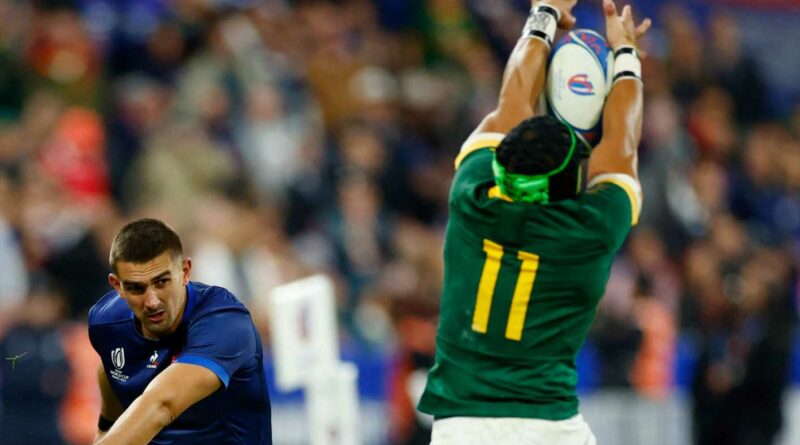Was Cheslin Kolbe’s crucial charge-down in South Africa vs France illegal?
Sign up to our free sport newsletter for all the latest news on everything from cycling to boxing
Sign up to our free sport email for all the latest news
Thanks for signing up to the
Sport email
Video footage has emerged on social media suggesting that Cheslin Kolbe’s crucial chargedown in South Africa’s win over France should not have been permitted.
Kolbe blocked the attempt from the tee of former Toulouse teammate Thomas Ramos as the France full-back looked to convert Peato Mauvaka’s second try with the game tied at 12 point apiece.
The Springboks went on to win the game by a single point, sustaining their defensive effort across a long final passage as France sought to set up a position from which they could snatch the win.
But after reviewing the footage, French journalist Clement Mazella believes he has uncovered an angle that shows that Kolbe set off too soon.
Players hoping to charge down a conversion must start behind their own try-line and can only move once the kicker has commenced their run-up.
Actu Rugby’s Mazella suggested that the television match official (TMO) could have come in and allowed Ramos to re-take the kick.
Kolbe, though, insisted afterwards that he had followed the letter of the law, suggesting his familiarity with his ex-colleague had played a part in getting his timing right.
“I have never charged down a kick before, it was my first one,” Kolbe said afterwards. “I played with Thomas and you have an idea of what his process is when it comes to goalkicking, and you analyse players throughout the week.
“I think I was in a good position, behind my goal line, when he took off and I then ran as fast as I could towards him to try to block him. It worked and it was very nice.
“I was hoping [the TMO] wouldn’t check it! But even if he had done, I am sure for my part that I had done things according to the rules.”
South Africa take on England in the second World Cup semi-final at the Stade de France on Saturday.
Source: Read Full Article




